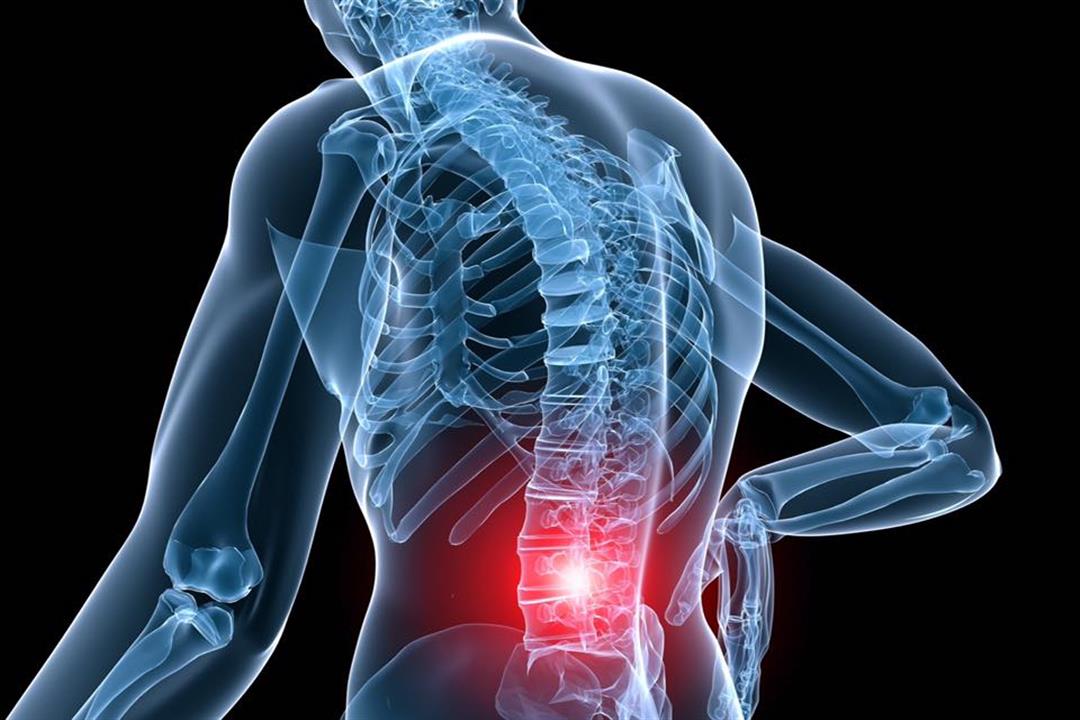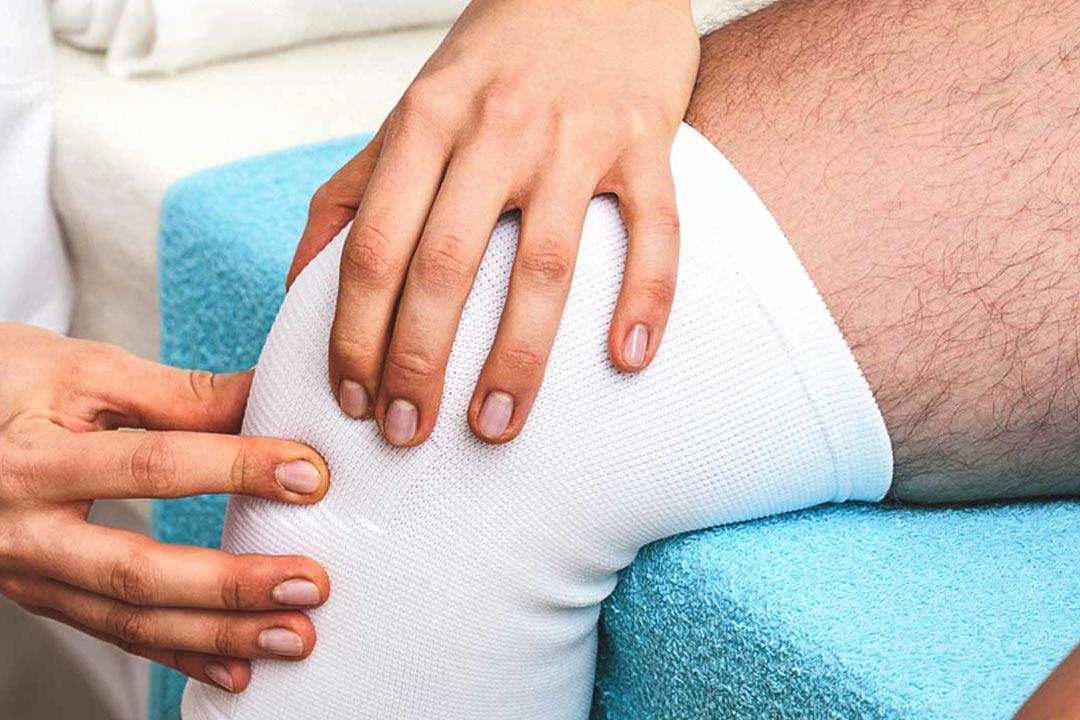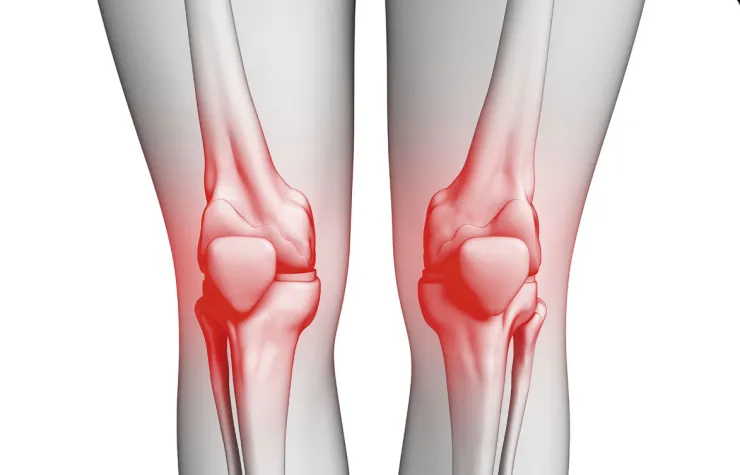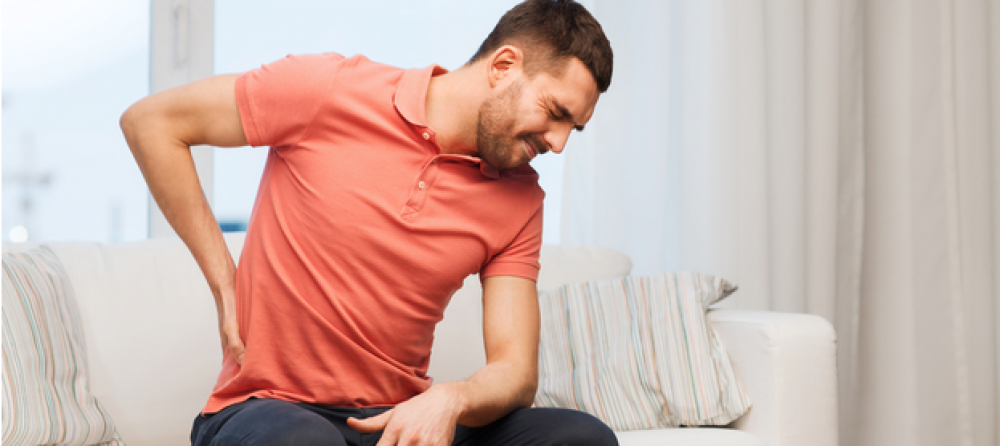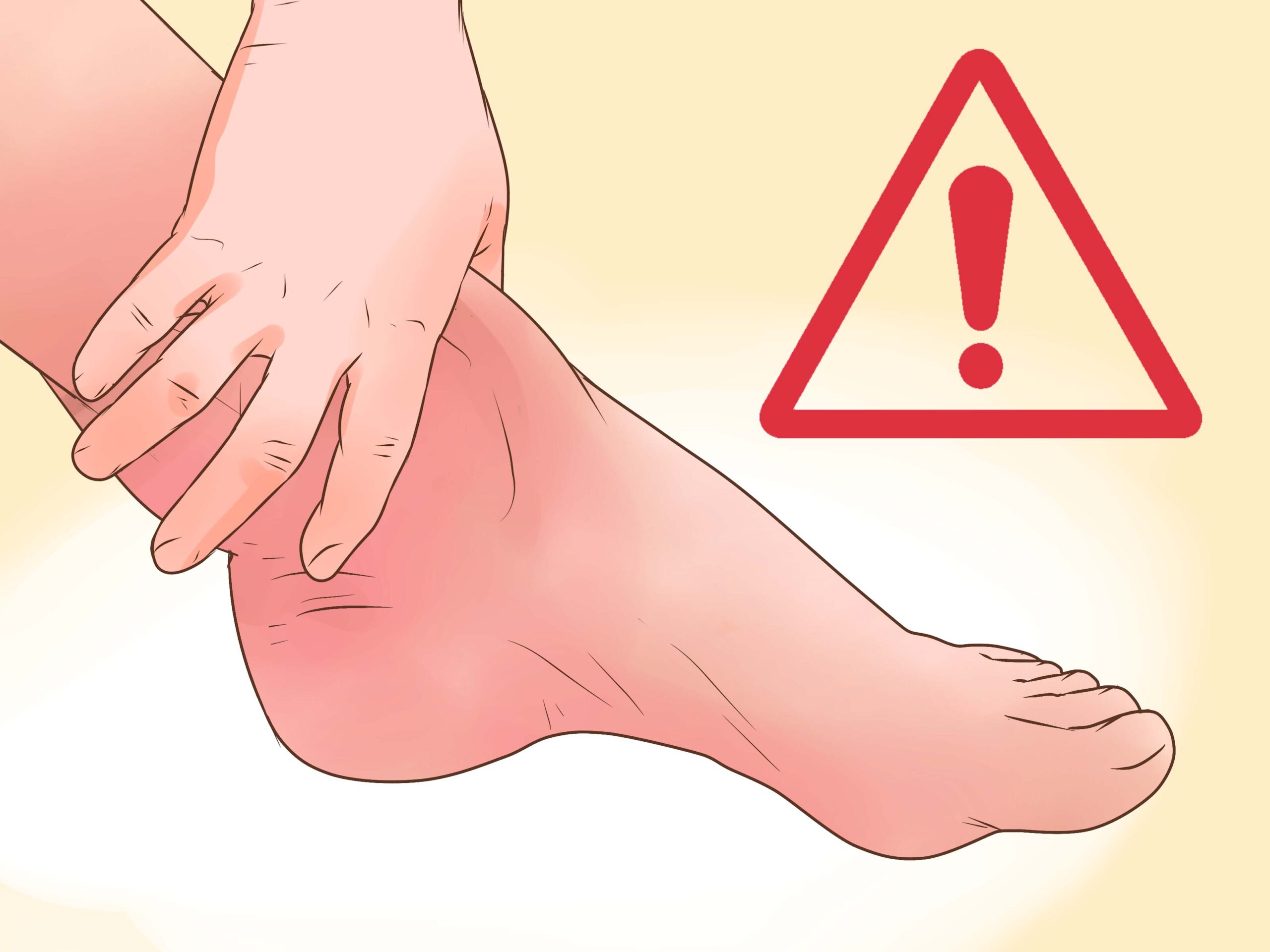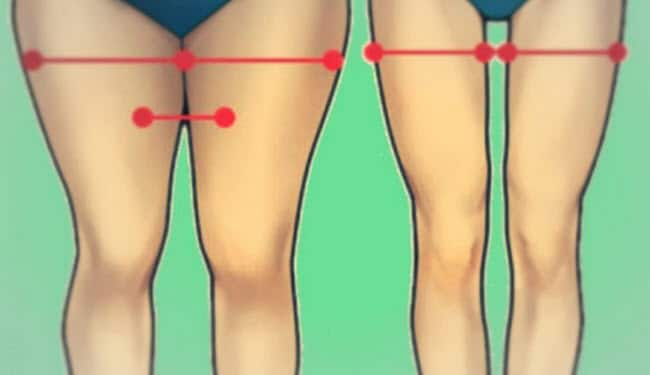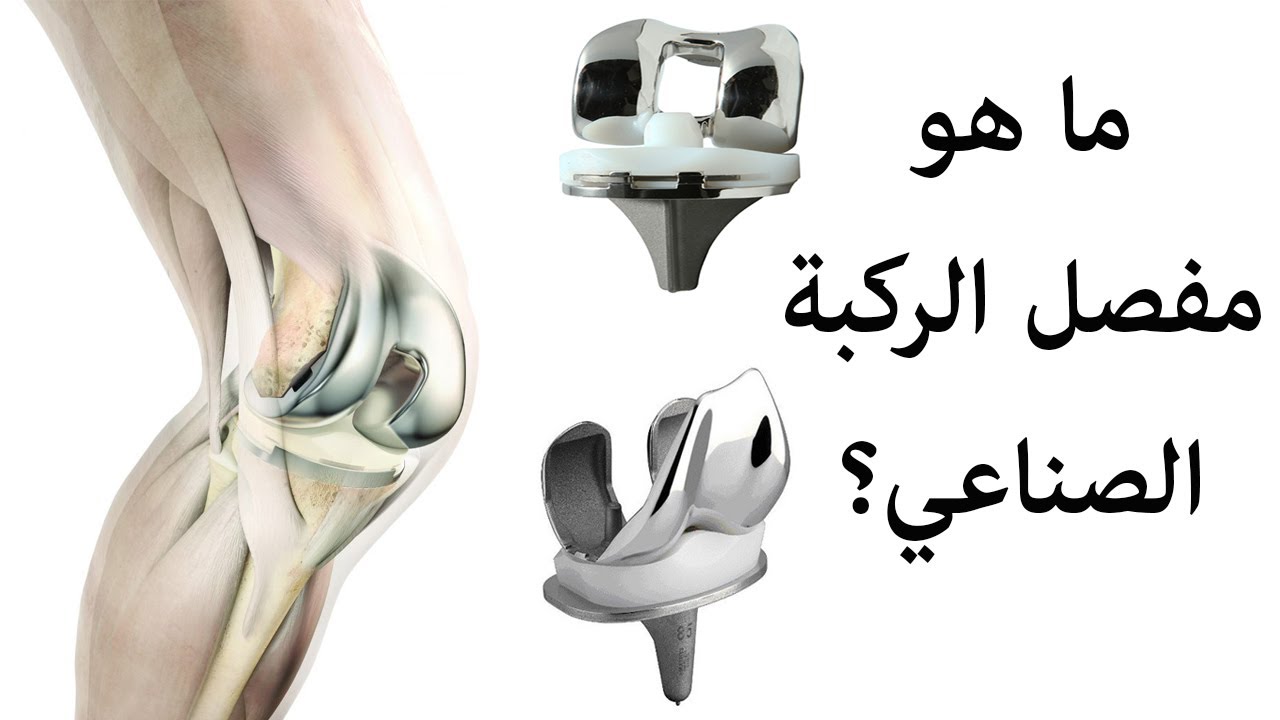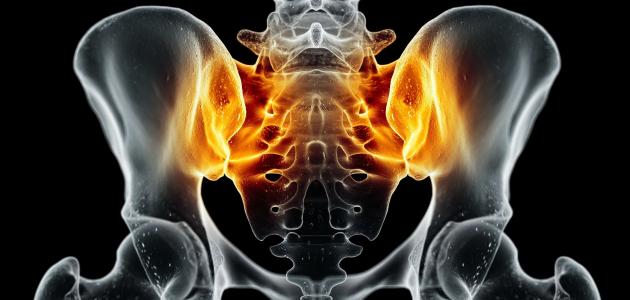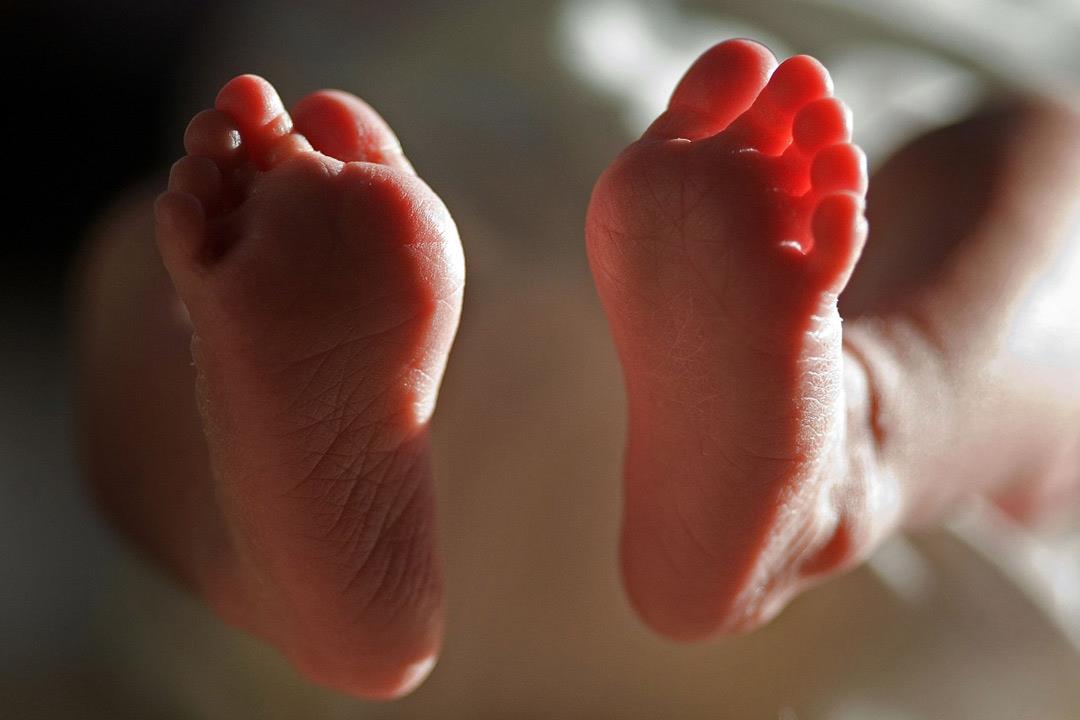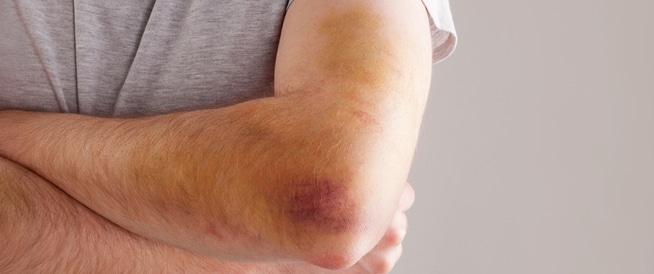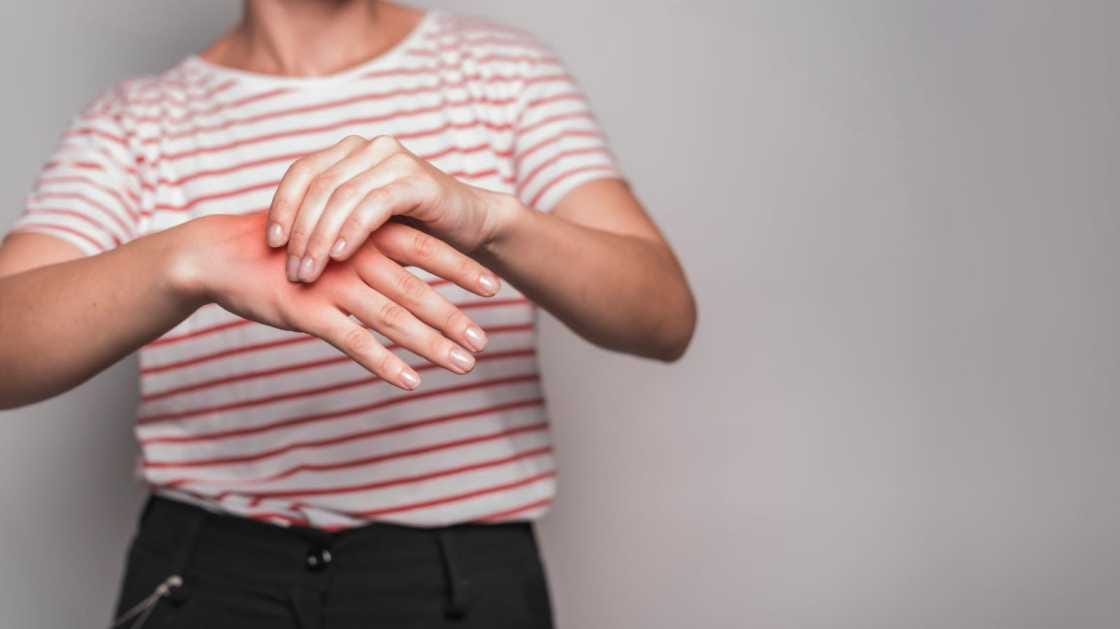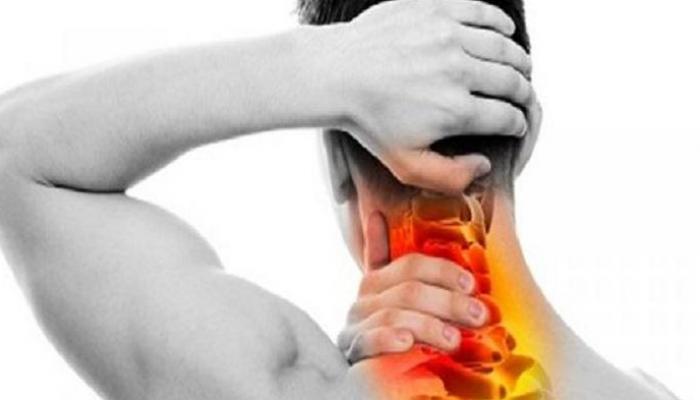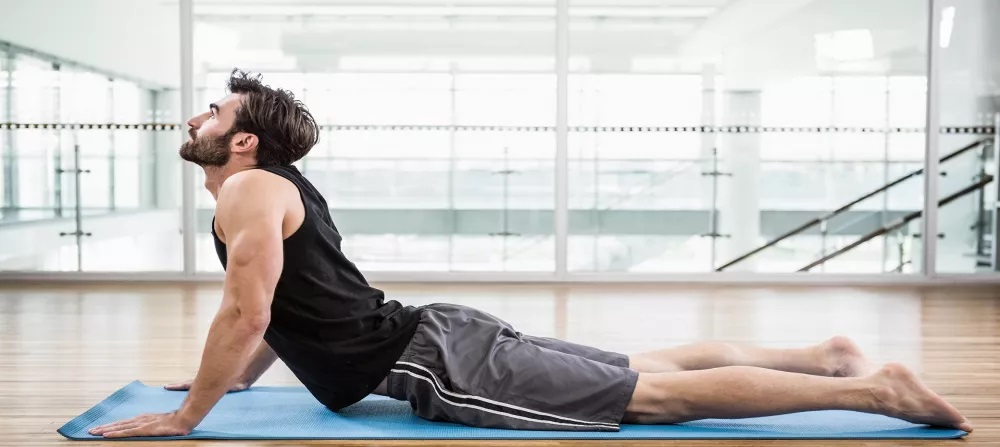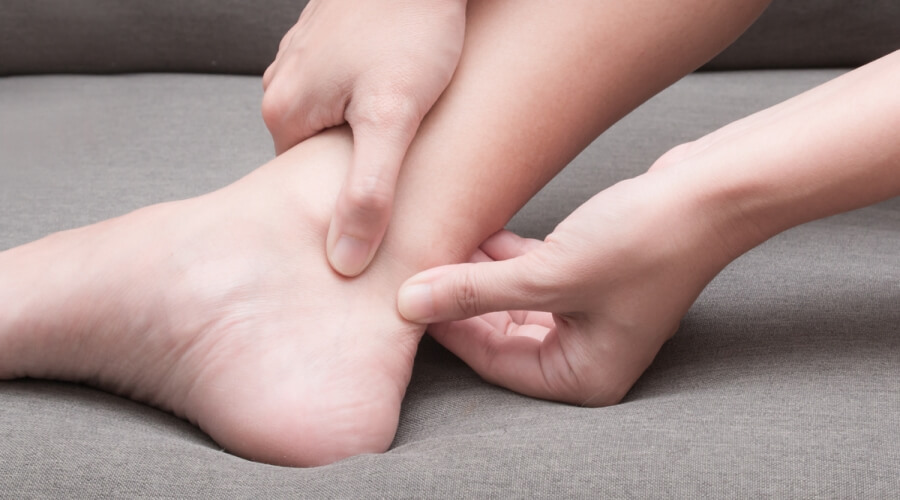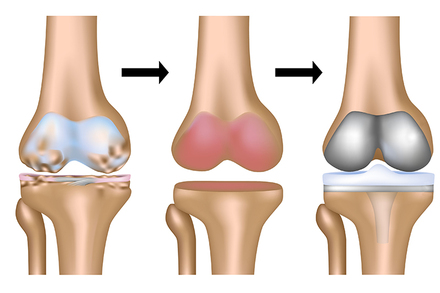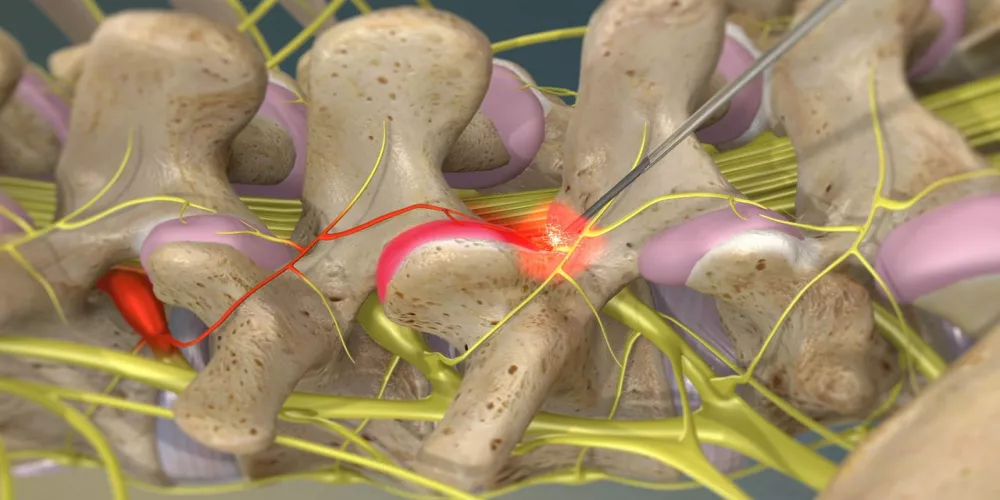Learn more about lower back pain and who is the best doctor for treating the spine? Lower Back Pain
lower back pain
Many suffer from lower back pain, and you probably have many questions about this frustrating issue. Fortunately, we offer you a list of six important tips to deal with lower back pain. Get to know them now:
- Engage in appropriate physical exercises: A little exercise can go a long way in alleviating lower back pain. Try to practice strengthening exercises for the back and abdominal muscles regularly to enhance support for the spine. You can also consult a physical therapy specialist to help determine suitable exercises.
- Ensure a proper sitting posture: Your sitting position should be comfortable and supportive for the back. Use a lumbar cushion for support or choose a comfortable chair and adjust its height to maintain a proper posture. Avoid sitting for prolonged periods and move your back muscles regularly while sitting.
- Pay attention to your body weight: If you are overweight, the extra weight might put more pressure on the spine and result in lower back pain. Try to reduce weight by maintaining a healthy, balanced diet and regularly exercising.
- Use heating and cooling methods: Heating and cooling can be effective in relieving pain. You can use an ice pack to alleviate swelling and inflammation, and heating pads to relieve tense muscles. Make sure to consult your doctor before using these methods for the necessary guidance.
- Be wary of incorrect lifting techniques: When lifting heavy items, you should adopt the right technique. Bend your knees, hug the load, and keep it close to your body. Avoid excessive bending and straining your back. Support belts might also be helpful in some cases.
- Consult your doctor: If the lower back pain persists and increases in intensity or worsens over time, you should see your doctor. It might require a detailed evaluation and specialist diagnosis to determine the cause of the pain and suggest the best treatment.
Proper confrontation and self-care of your body can play a pivotal role in alleviating lower back pain. Remember that common back pains are usually transient and respond to simple measures.
What is the cause of lower back pain above the buttocks?
Here is a list of some possible causes of back pain that occurs above the buttocks:
Tight back muscles: The pain you feel may be due to tension or strain in your back muscles. This can happen as a result of exposure to excessive physical stress or due to using an incorrect sitting posture for a long period.
Pressure on the nerves: There are nerves extending across the lower back area, and when these nerves are subjected to pressure or slippage in the nearby vertebrae, it can cause severe pain above the buttocks and lower back.
Injury: The pain may result from an injury to the back area, such as a fall or a car accident. You should consult a doctor if there is sudden or severe pain, or if there are any clear signs of injury.
Problems in the spinal discs: Your pain may be due to problems in the spinal discs near the buttocks. Many people suffer from disc inflammation and slipped discs, both of which can cause sharp pain above the buttocks and lower back.
Weakness of muscles or imbalance: Muscular pain in the upper back area may occur due to weakness of the back muscles or imbalance between the back, abdomen, and buttock muscles. This weakness can lead to strain and irritation of the back muscles.
Joint problems: In some cases, the problem may be related to the joints in the upper back area, such as sacroiliac joint inflammation. This can cause severe pain above the buttocks.
Spinal column problems: Some structural diseases in the spinal column may cause pain above the buttocks and lower back. This may include lumbar lordosis, temporal arthritis, and other spinal column disorders.
What does lower back pain indicate?
Do you feel pain in your lower back and want to know its cause? Back pain can be annoying, painful, and affect your daily life. In this article, we will review some common causes that may be behind lower back pain. Before continuing to read, please note that we are not doctors and this information does not replace consulting a qualified doctor.
Muscle tension: The cause of pain in the lower back may be muscle tension. This can occur as a result of sitting for long periods, moving improperly, or lifting heavy weights. Tight muscles put pressure on surrounding nerves and ligaments, causing pain in the lower back area.
Spinal column problems: There may be problems in the spinal column causing pain in the lower back. These problems include:
- Disc herniation: “Disc herniation” occurs when a disc of cartilage between the adjacent vertebrae slips towards the nerves, causing pain.
- Pressure on the sciatic nerve: Pressure may occur on the roots of the sciatic nerve emerging from the spinal column, which pass through the lower back area. This can lead to pain in the lower back.
- Arthritis: Pain in the lower back may result from arthritis. Arthritis can lead to degeneration and swelling of the joints, causing pain and pressure on nearby nerves.
- Muscular diseases: There are muscular diseases such as myositis and muscle dystrophy that may be behind persistent pain in the lower back.
- Injuries: Pain in the lower back may be the result of an injury, fall, or blow to the area.
- Other diseases: There are many other diseases such as kidney inflammation, urinary tract infections, and appendicitis, which may cause pain in the lower back.
Always remember that consulting a specialist doctor is the best way to diagnose the lower back pain you are experiencing. They can conduct a thorough examination, take your medical history, and perform necessary radiographs to determine the real cause of the pain. Appropriate treatment may require referral to a specialist such as an orthopedist or rheumatologist.
What does lower back pain mean in women?
Lower back pain is a common health issue that many women experience. This pain can be bothersome and may affect their daily lives and the performance of daily tasks. But what is the cause behind this pain? In this article, we will explore the most likely reasons for back pain in women and some measures that can be taken to alleviate this problem.
Muscle tension: Back pain may result from muscle tension. Tension in the muscles surrounding the spine can cause pain in women. This tension can lead to pressure on the nerves and surrounding tissues, resulting in pain.
Spinal issues: Back pain may also result from problems in the spine, such as a slipped disc or displacement. These issues can cause pressure on the nerves and surrounding tissues, leading to pain.
Hormonal changes: Women experience hormonal changes throughout their lives, including during the menstrual cycle and pregnancy. These hormonal changes may cause back pain. The pain may be associated with changes in the body’s hormones.
Pregnancy: Many women experience back pain during pregnancy. There is an increase in weight and changes in balance that may lead to back pain. The pain may result from additional pressure on the spine from the fetus and hormonal increase.
Stress and psychological tension: Psychological stress and tension can lead to back pain. Many women live busy lives filled with stressors, which can lead to muscle tension and pain.
Reproductive organ issues: Some back pains may result from issues in the reproductive organs, such as ovarian inflammation or polycystic ovaries. Displacement or pressure on the nerves can cause back pain.
If you notice any of these symptoms, it is best to consult your gynecologist. They are most capable of identifying the real cause of your back pain and providing the appropriate treatment. You can also follow some measures that may help alleviate the pain, such as practicing back-strengthening exercises, avoiding stress and tension, applying heat/cold to the painful area, and following a healthy and balanced lifestyle.
How can lower back pain be eliminated?
Lower back pain is a common problem that many people of different ages face. This pain can cause bothersome symptoms, restrict body movement, and impact the ability to carry out daily activities. However, there are several ways that can help alleviate lower back pain and improve your quality of life. Below, we offer you some useful tips:
Physical Exercises:
- Look for exercises targeting the strengthening of back, abdominal, and buttock muscles, such as resistance-based exercises and stretching.
- Regularly walking or swimming can strengthen back muscles and enhance their flexibility.
Maintaining a Good Body Posture:
- Maintain correct sitting and standing postures, keep your back straight and supported.
- Use comfortable supporting cushions while sitting, and avoid using uncomfortable chairs.
Heat and Cold Therapy:
- Use warm compresses, such as hot water bottles or heating pads, to relieve pain.
- Conversely, you can use ice packs or cold gels to reduce swelling and soothe the pain.
Maintaining an Optimal Weight:
- Obesity and being overweight put additional pressure on the back, increasing the likelihood of pain. Maintain a healthy weight through a balanced diet and regular exercise.
Reducing Psychological Stress:
- Stress and anxiety can intensify the pain and its negative impact. Try to relax using deep breathing techniques and calming practices such as yoga or meditation.
Physical Therapy:
- Physical therapy is an effective option for strengthening muscles and increasing flexibility in the back area. Consult a physical therapist to diagnose the pain and determine the appropriate treatment plan for you.
Do not forget that if the pain persists or worsens, it is important to consult a doctor to evaluate the condition and provide appropriate treatment.
When is lower back pain dangerous?
No one wants to experience lower back pain, as this type of pain is often uncomfortable and can negatively affect your daily life. In some cases, lower back pain is a natural symptom of a temporary problem, such as sitting for a long time or moving in the wrong way. However, there are times when lower back pain may indicate a serious condition. Recognizing the signs and symptoms that indicate serious pain can help you make the right decision regarding the appropriate treatment. In this article, we will take a look at lower back pain and when it can be dangerous.
List of Warning Signs for Serious Lower Back Pain:
- Numbness or Weakness in the Legs: If you are experiencing numbness or weakness in your legs, this could be a sign of nerve compression in the lower back. You may need to see a doctor to assess your condition directly.
- Loss of Control Over Urinary or Bowel Movements: If you have difficulty controlling the urge to urinate or experience constipation, this may indicate a problem with the nerves that supply these areas. This issue could be related to spinal stenosis and requires immediate evaluation.
- Sudden and Severe Pain: If you suddenly feel a sharp pain in the lower back area, especially if it is accompanied by difficulty breathing or chest pain, this could indicate a serious problem such as a disc rupture or an abscess in the vertebrae. You need to seek medical attention immediately.
- Chronic Unbearable Pain: If you have persistent lower back pain that continues consistently and does not respond to self-treatment such as rest and ice application, there might be a more significant issue at hand. This condition necessitates a visit to the doctor to evaluate your situation and suggest an appropriate treatment plan.
- Accompanied by Other Symptoms: If you are experiencing lower back pain along with other symptoms such as a fever, sore throat, or difficulty breathing, this could indicate an inflammation or infection that requires immediate medical attention.
When it comes to lower back pain, the range in severity can be significant. In many cases, lower back pain results from simple factors that can be managed with rest and self-treatment. However, there are some cases that require immediate attention and medical assistance. If you have any doubts about your lower back pain, it is always best to consult a specialist doctor to evaluate your condition and guide you appropriately.
Does Lower Back Pain Have a Relationship with the Kidneys?
Are you experiencing lower back pain and worried about your kidney health? You might have several questions regarding the relationship between lower back pain and the kidneys. In this article, we will shed light on this topic and provide you with some important information.
Lower Back Pain and Kidneys: Many people suffer from lower back pain and wonder if it has a relationship with the kidneys. The truth is that lower back pain can be due to multiple causes, including kidney issues.
Possible Causes of Lower Back Pain: Lower back pain may occur due to several reasons, such as:
- Muscle strain or muscle sprains.
- Stressed ligaments or torn fibrous cords.
- Spinal deformities, such as a slipped disc or nerve compression.
- Arthritis, such as sacroiliac joint inflammation.
- Pelvic or small pelvis inflammation.
Recognizing Kidney Problem Symptoms: Symptoms of kidney problems can be diverse and varied, including:
- Pain on the back side of the body, which may radiate to the lower back.
- Increased urination, or painful urination.
- Continuous tiredness or general weakness.
- Unexplained high blood pressure.
- Changes in urine color, such as blood in the urine or dark urine.
The Relationship Between Lower Back Pain and Kidney Problems: Lower back pain can be accompanied by some kidney problems, such as kidney inflammation or kidney stones. However, it should be noted that the kidneys themselves are not the only possible cause of pain in this area.
When to Consult a Doctor: If you have persistent and distressing pain in the lower back area, it is best to consult a doctor. The doctor will be able to diagnose the condition accurately, determine the cause of the pain, and additional tests such as urine analysis or kidney ultrasound may be required.
In summary, lower back pain can be related to the kidneys, but it is not the only possible cause. If you are suffering from persistent pain or symptoms indicating kidney problems, it is best to consult a doctor to get the correct diagnosis and necessary treatment.
What is the Best Pain Reliever for Back Pain?
If you suffer from chronic or acute back pain, choosing the right pain reliever for your condition can be a challenging task. Here, we will take a look at some of the best pain relievers available for alleviating back pain. However, you should always consult a doctor before taking any of these pain relievers to ensure they are suitable for your individual health condition.
- Paracetamol: Paracetamol is a widely used pain reliever for mitigating mild to severe pain, including back pain. It works by inhibiting pain nerves in the body and is considered safe for long-term use as it does not cause liver toxicity when used at recommended doses. However, it is important to take the recommended dose and not exceed it.
- Non-Steroidal Anti-Inflammatory Drugs (NSAIDs): Non-Steroidal Anti-Inflammatory Drugs, such as ibuprofen, naproxen, and diclofenac, include a variety of medications used for pain relief, including back pain. These drugs work by inhibiting enzymes that cause swelling and inflammation in the body. They should be taken regularly according to the doctor’s instructions and not for long periods without consulting a doctor.
- COX-2 Inhibitors: COX-2 inhibitors are another class of drugs used to relieve pain and inflammation. These drugs work by inhibiting the COX-2 enzyme responsible for swelling and inflammation in the body. Although effective in relieving back pain, long-term use may increase the risk of health problems such as an increased risk of blood clots. Therefore, a doctor’s consultation is necessary before taking them.
- Muscle Relaxants: These medications are used to treat muscle pain and spasms associated with back pain. They work by relieving tension in tense muscles, improving movement and mobility. However, they should be used cautiously and not relied upon for long periods without consulting a doctor.
- Topical Analgesics: Topical analgesics are pain relievers applied directly to the affected area to alleviate localized pain, including back pain. They work by reducing swelling, irritation, and soothing pain. There are various types of topical analgesics available in the market, such as creams, gels, and sprays. Choose the application method that suits you and make sure to follow the recommended usage instructions.
In summary, while there are various pain relievers available for back pain, it is crucial to consult a doctor to determine the most appropriate one for your specific condition and to ensure safe and effective pain management.
Can Vitamin D Deficiency Cause Back Pain?
Vitamin D deficiency could potentially be a cause of back pain. If you are concerned or experiencing similar symptoms, it is important to consult a doctor for proper diagnosis and appropriate treatment. Your body may need more Vitamin D to enhance bone strength and reduce back pain.
Are you experiencing back pain and wondering if a lack of Vitamin D could be the reason? This question might be on your mind, and you might be looking for an accurate answer. In this article, we will provide you with some useful information about the relationship between Vitamin D deficiency and back pain.
There are some indicators that might suggest a deficiency of Vitamin D in the body, such as constant fatigue, general tiredness, and weak bones. Additionally, some people might experience muscle and joint pain, including back pain. Although there are other factors that could cause back pain, Vitamin D deficiency is a possible factor behind these pains.
If you have a Vitamin D deficiency, it affects the body’s process of calcium absorption, which is a crucial element for building strong bones. A lack of Vitamin D could lead to weakened and deteriorating bones, increasing the likelihood of experiencing back pain.
Furthermore, Vitamin D deficiency can impact muscle strength and activity. If the muscles are weak, there could be an increased pressure on the spine, resulting in back pain.
If you are suffering from back pain and suspect a Vitamin D deficiency, it is crucial to consult a doctor for an accurate diagnosis. The doctor may order blood tests to measure the level of Vitamin D in your body. If the results confirm a Vitamin D deficiency, you might be prescribed Vitamin D supplements for treatment.
In addition to taking supplements, there are other steps you can take to support your back health and maintain optimal Vitamin D levels. These steps may include short daily exposure to sunlight, eating foods rich in Vitamin D like fatty fish and egg yolks, engaging in weight-bearing exercises, and consulting specialists in the field for additional guidance.
Does Walking Relieve Lower Back Pain?
Do you suffer from lower back pain and are looking for ways to alleviate it? The answer might be simple: walking. Yes, this simple daily activity could be the remedy you’re seeking to relieve back pain. In this article, we will take a look at the benefits of walking and how it can be effective in relieving lower back pain.
- Strengthening Back Muscles: Walking is an effective means of strengthening the back muscles. It activates the muscles in the back area and strengthens them. Consequently, stronger muscles mean improved support and stability for the spine, reducing pain and muscle tension.
- Improving Spinal Flexibility: Walking is a light endurance activity that works to improve the flexibility of the spine. As you walk, the muscles are activated, and the trunk is stretched and flexed, enhancing the flexibility of the spine. Therefore, walking can contribute to reducing stiffness and contractions in the spine, relieving pain.
- Improving Blood Circulation: Another benefit of walking is improved blood circulation. When walking, blood moves more effectively throughout all parts of the body, including the lower back. This enhances the flow of blood, oxygen, and necessary nutrients to the tissues and muscles, helping to alleviate pain and promote healing processes.
- Improving Posture: Poor posture is often a primary cause of back pain. Walking properly helps to improve body posture and adjust muscular balance. Therefore, regular walking can lead to reduced pressure on the spine, improved strength of supporting muscles, and consequently, reduced pain and tension in the back area.
- Reducing Excess Weight: Obesity is a factor that can cause lower back pain. Regular walking helps to burn calories and contributes to weight loss. Thus, losing weight reduces the pressure on the spine and helps in reducing back pain.
When Should You Visit a Doctor for Lower Back Pain?
Back pain is a common ailment that many people experience. Back pain can result from various causes such as muscle tension, arthritis, muscle spasms, or herniated discs. Although most cases of back pain naturally subside within a few days or weeks, there are some situations that require a doctor’s visit. In this article, we will highlight when you should seek medical attention for lower back pain.
If the Back Pain is Severe and Persistent: If you are experiencing severe and continuous back pain, without gradual improvement, it may indicate a more serious issue. There could be a ligament tear, a bone fracture, or a herniated disc, and these conditions require a clinical evaluation by a doctor.
If Back Pain Causes Difficulty in Movement: If you are unable to move your back normally or find it difficult to sit and stand due to back pain, you may be dealing with a serious problem. This could indicate nerve compression or a herniated disc affecting the movement of the spine, and such conditions require a doctor’s consultation.
If Back Pain is Accompanied by Leg Pain: If you feel pain in the lower back that radiates to the legs, you might have a disc herniation problem. This could also be accompanied by numbness or weakness in the legs. You should consult a doctor to diagnose the condition and establish an appropriate treatment plan.
If There is Sudden Back Pain After an Accident: If you’ve been in an accident or something heavy fell on your back, and you immediately start feeling severe pain, you should seek medical attention right away. There could be a serious injury such as a bone fracture or ligament tear.
If Back Pain Radiates to the Abdomen or Chest: If you feel back pain that extends to the abdomen or chest, this could be a sign of issues in the digestive system or heart. You should see a doctor to diagnose the condition and determine the cause.
Best Doctor for Treating Spinal Vertebrae Problems
Many individuals suffer from issues with their spinal vertebrae, leading to pain and a decrease in the quality of their daily lives. To address this issue, patients require specialized and professional medical care from an experienced doctor in this field. One of the best doctors for treating problems related to the spinal vertebrae is Dr. Amr Amal.
Dr. Amr Amal is a specialist in neurology and reconstructive surgery, with extensive experience in treating back problems. He enjoys an excellent reputation in the medical field and has performed numerous successful operations for his patients.
What sets Dr. Amr Amal apart is his vast experience and focus on the comfort and safety of the patients. He accurately diagnoses the problem and guides patients towards the optimal treatment for their condition. He employs modern and advanced therapeutic methods to achieve the best results with the least possible surgical intervention.
Dr. Amr Amal interacts professionally and kindly with patients, striving hard to provide an excellent medical experience. He connects with patients, listens to their concerns and needs, creating a comfortable environment and enhancing patient satisfaction.
Advanced spinal vertebrae problems might require surgical procedures, and here, Dr. Amr Amal’s extensive experience in surgery comes into play. He utilizes the latest surgical techniques and equipment to achieve the best outcomes. He works meticulously to fix the issue and improve the patients’ condition.


